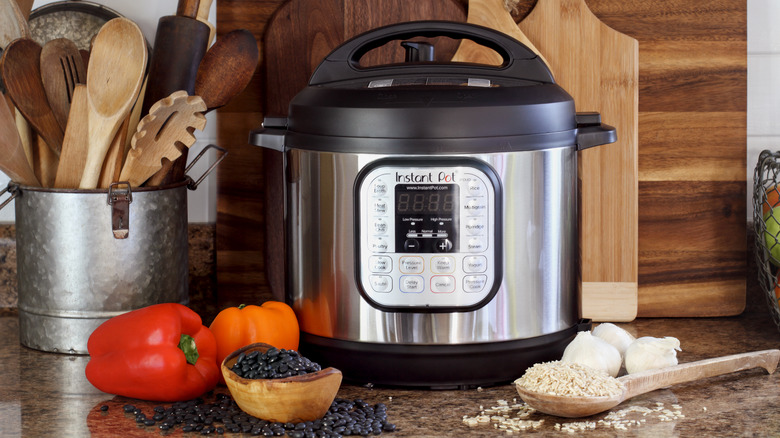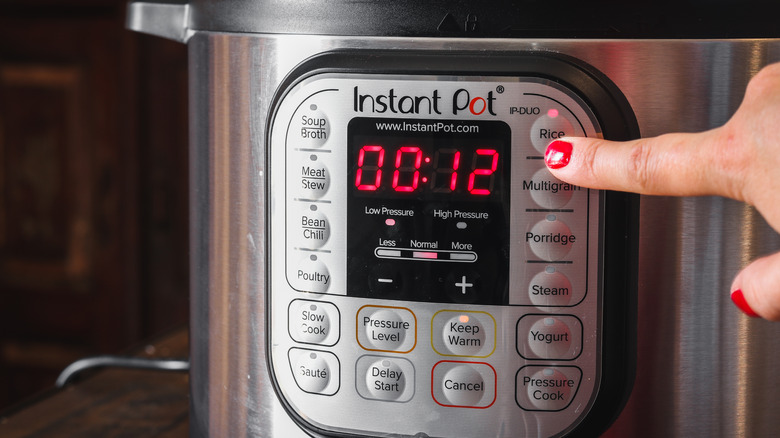Yes, You Really Should Do The Water Test Before Using Your Instant Pot
Electric pressure cookers are a great way to whip up a quick weeknight dinner, but buying one for the first time may seem a bit daunting. With so many different features, it can be tricky to get used to using one.
The original Instant Pot features preset buttons that can be used to cook beef stew, chili, rice, and chicken (per CNET). Certain cookers can also be used to air fry, sauté, and steam food. There are several different brands that carry this appliance with a wide range of models to choose from. So it is important that you do your research before deciding which is right for you.
Once you've picked the perfect model, using an electric pressure cooker for the first time may seem intimidating. Starting with easier recipes can help you get used to its settings and avoid common mistakes. Before you dive into cooking a full meal with your new appliance, Instant Pot recommends that you perform a water test to better familiarize yourself with your electric pressure cooker's features.
How do you do the water test?
The water test is a great way to help you get acquainted with your new kitchen gadget. The Instant Pot website gives instructions for the test, stating that it will take just 20 minutes to perform. To start, add 3 cups of water to the inner pot. You will then place the lid on your Instant Pot. The appliance will chime to let you know when it is fully sealed.
Once the lid is secured, adjust the steam release valve to Sealed. Using the Pressure Cook setting, adjust the time to five minutes. The pressure will begin building and the machine will beep once the cycle has finished. You can then open the steam release valve to use the Quick Release function or allow it to sit and slowly release pressure on its own.
It is always best to consult your cooker's manual for special instructions that may apply to your particular Instant Pot model. Once you have, the water test is a great way to learn about the functionality of your new Instant Pot, especially if you have never owned an electric pressure cooker before.

